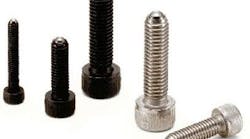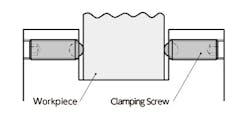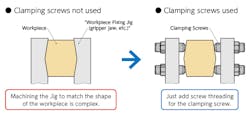The following article is re-purposed from NBK’s Tips on Clamping Screws.
Image Courtesy of NBK America LLC
Clamping screws are used for workpiece fixing and positioning, especially in applications like machining and mechanical testing. They comprise of a screw with a ball tip that applies horizontal force to the workpiece, keeping it in place. It can be noted that hex socket-head cap screw clamping bolts are used for similar applications to clamping screws. But clamping screws are credited with reducing damage to the workpiece while keeping it securely clamped.
Additionally, the ball tips of clamping screws can more easily secure irregularly shaped workpieces, without having to alter the shape of the jig piece (see below).
Image Courtesy of NBK America LLC
There are four types of ball-tip shapes for clamping screws. Full ball fixes the work piece and is low cost, while flat ball preserves the integrity of the workpiece and implements a large contact surface area. The other two are limited swivel types, with the flat-ball type having a flat surface, and the knurled ball meshing with rough surfaces to prevent swiveling or reversal.
Image Courtesy of NBK America LLC
NBK also identifies 5 types of ball materials and their benefits. They include steel with 50-60 HRC hardness; stainless steel with the same hardness, but corrosion and heat resistance; polyacetal with 94 HRM hardness and a knack for preserving the integrity of workpieces; brass with 75-125 HV hardness that also reduces damage to the workpiece; and ceramic with 1100 HV hardness and electrical insulation and wear resistance.
To learn about NBK's clamping screw offerings, visit their site.




